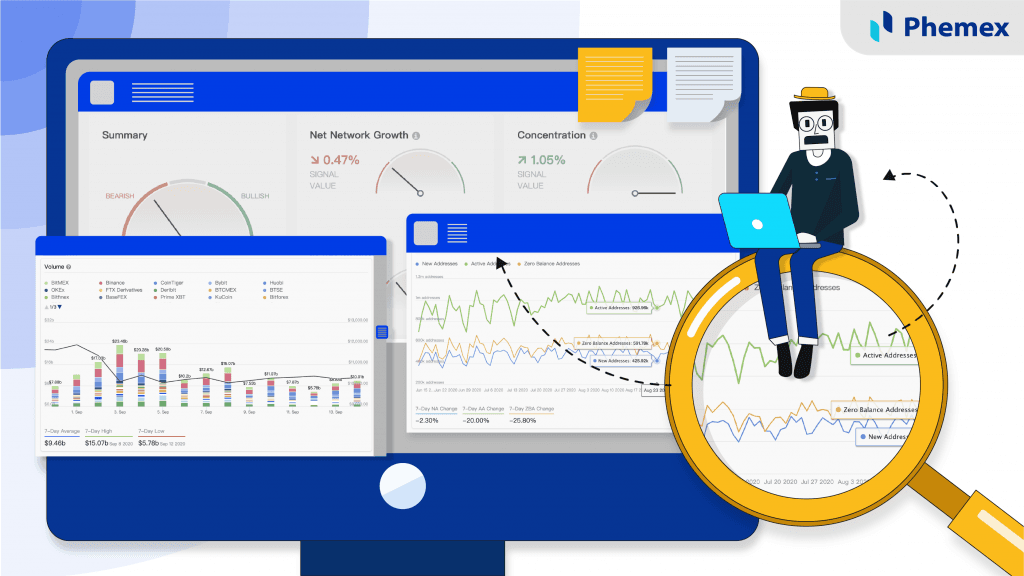Summary
- What is Short Squeeze: During a sudden market movement, short-sellers will rebuy into an asset en masse, creating a momentum that pushes itself and the price ever higher. This squeezes the short-sellers from the market, and usually for a loss.
- A short squeeze forces short-sellers to buy back in, pushes the price higher, and squeezes out more shorts. A short squeeze can also occur when there is a disruption to the supply or excess demand for an asset due to short-sellers liquidating their positions.

One of the most commonly used words in the trading world is ‘risk.’ Betting on any asset’s performance is risky to some degree, but with the right insight, skilled traders can profit regardless of market conditions. Shorting an asset is betting on an asset’s depreciation, and it involves borrowing the asset and selling it, only to rebuy at a lower price point to give the asset back. The remaining sum after interest is profit.
What is Short Selling?
Short selling is standard practice and keeps both investors and companies on their toes. It’s only worth holding an investment if you know it can be sold. And if an asset seems overvalued, traders will short it. GameStop was recently reported as the most shorted company on the S&P 500, primarily due to the public sentiment that it wouldn’t survive the shift away from retail stores during the coronavirus.
Short Selling in Crypto Markets
This is also true for cryptocurrencies. The sentiment around privacy tokens is rather somber with how regulators are clamping down on KYC requirements and banning anonymous transactions. The number of shorts on Monero, arguably the most prominent privacy coin in the blockchain space, has been rising since mid-2020. It currently has over 3x more shorts than longs, according to Datamish, most of them unhedged.
However, in cases where the market doesn’t follow the trader’s prediction, and the asset instead rises in value, traders will rebuy in a frenzy to minimize their losses. In most cases, especially with cryptocurrencies, it’s much easier to short an asset using a derivative contract, and since some have an expiration date, traders are forced to act quickly.
What is A Short Squeeze?
During a sudden market movement, short-sellers will rebuy into an asset en masse, creating a momentum that pushes itself and the price ever higher. This squeezes the short-sellers from the market, and usually for a loss. After dropping to around 6% of its all-time high value, GameStop’s stock began to rise in a short squeeze from September 2020, growing by over 10x over the next few months. The short squeeze is powerful. In 2008, a short squeeze pumped Volkswagen shares by 5x in just two days, briefly making it the most valuable company in the world.
It comes quickly, without warning, and takes no prisoners. With an 18% short interest, Tesla’s 400% rise in late-2019 to early-2020 collectively lost short-sellers over $8 billion. However, its downturn in March pushed $50 billion back into their pockets within just a few days. It’s a dangerous position to be in, and it takes both knowledge and experience to handle a short squeeze well. If you’re reading this, you’re almost halfway there.
Is A Short Squeeze Good or Bad?
Regardless of how sure an investor is about an asset’s potential to depreciate, a short position can quickly be wiped out by something as simple as a product announcement or an upbeat news story. While these shifts may be temporary, it can lead to severe losses and even complete liquidation if left unchecked.
What Causes A Short Squeeze?
A short squeeze forces short-sellers to buy back in, pushes the price higher, and squeezes out more shorts. A short squeeze can also occur when there is a disruption to the supply or excess demand for an asset due to short-sellers liquidating their positions.
Being caught on the wrong side of a short squeeze can be devastating, and a great way to avoid being stuck in one is to place hard stops on all short positions. This can help protect your capital against sudden market movements in either direction.
How to Predict A Short Squeeze?
It’s practically impossible to predict a short squeeze every single time accurately, but by tracking heavily shorted assets, traders can quickly respond when one occurs. In these scenarios, holdings can also be traded like momentum assets, but it’s imperative to start small due to the highly volatile environment.
Short interest percentage
The first metric to observe is an asset’s short interest percentage – which tracks the number of shorts divided by the number of outstanding shares. It’s expressed as a percentage, and the higher its value, the more short-sellers will compete during a squeeze. A sudden increase or decrease in short interest can be incredibly revealing. Even a 10% increase in short interest implies a tenth of the market has moved to short the asset, which is a reasonable signal to investigate further.
Bullish investors view a high short interest as an opportunity to make money from the abrupt momentum shift. During a squeeze, short-sellers decrease supply by scrambling to replace their borrowed assets. Since short squeezes tend to happen more often with smaller market cap assets, a supply bottleneck can quickly arise out of such situations.
How to calculate the short-interest ratio?
The short-interest ratio can be used to track market sentiment by observing when the value is outside its usual range. It is calculated by dividing the total number of shorts by the average daily volume for that asset. When this metric pulls under the lower end of the range, it can signal an overvalued asset or that short-sellers are exiting due to price stability.
A rise above the range generally means investors have turned bearish, and very high measurements can predict an incoming short squeeze. This can drive speculative investors to buy even more of the asset, pushing the price even higher.
Is The Short Squeeze profitable?
Contrarian investors, or investors that go against the general sentiment, regularly purchase assets with heavy short interest to take advantage of potential short squeezes. While taking profits during a squeeze is hugely tempting, it comes with its own risks. Perhaps the shorts were being reasonable in assessing the asset’s value, and its sudden rise is fleeting.
Active traders regularly observe highly shorted assets to enter right when the squeeze starts. Still, while there are countless examples of stocks that short squeezed after heavy short interest, there are also assets with high short interest that continue to fall in value.
High short interest doesn’t necessarily lead to a short squeeze and usually just signifies that a large section of the market believes the asset is overvalued. Investing in such assets solely on the short interest is probably a bad idea, especially since a significant portion of the market thinks it will fall in value. However, combined with signals from other indicators, trading high short interest assets can be immensely profitable.
For example, consider an asset with a short interest of 20% and a short interest ratio, or ‘days to cover,’ of five. This means it will take short-sellers five days to buy back all their sold assets. In a scenario where a sudden product launch or news announcement pushes the price of the asset up, many of the short-sellers would have to liquidate their positions, with those who shorted lowest taking the harshest beating.
A Short Squeeze v.s. A Long Squeeze
In a similar vein, a long squeeze occurs when there is a sudden drop in an asset’s value, encouraging greater selling pressure and squeezing longs out of the market to protect their investments. While the long squeeze is nowhere near as popular as the short squeeze, they are far more applicable in smaller, less liquid markets where determined and panic investors produce higher volatility levels.
This is because while a short squeeze forces short-sellers to liquidate, a long squeeze must induce enough panic to get long holders to start dumping. They have no fundamental basis for selling and can be very brief or very long depending on several conditions. When the price falls too low, short-term investors usually bid the prices back up after receiving the oversold signal.
Whenever liquidity is involved, it’s vital to keep technical stats like supply and demand in mind. Aggressively growing stocks are generally more susceptible to long squeezes, especially if the volume is very high. Focusing on investing in value is the best way to handle these squeezes. Undervalued assets will usually recover unless there was a more intrinsic reason for the sell-off.
Use AMM to trade a short squeeze
With the rise of automated trading systems, bots can quickly jump into low liquidity markets and exploit both long and short squeezes to profit. Large players can easily manipulate an asset with limited market capitalization, causing a cascade effect to drive the price in either direction.
Short Squeezes in The Crypto Market
In June last year, Bitcoin surprised the market jumping from under $9,500 to a 4-month high of nearly $10,400 in just one day. It sparked the highest number of liquidations on BitMEX since October 2019 – worth a staggering $133 million. Over $430 million worth of Bitcoin shorts were liquidated across all platforms in less than 24 hours, with most of them occurring in the hour after Bitcoin crossed $10,000.
How does a short squeeze happen in the crypto market?
Short squeezes occur when traders force a surge in demand during temporary supply scarcity. This can significantly increase volatility in low-liquidity markets, and the larger the short interest, the easier it is to force short-sellers out of the market.
That being said, short squeezes can take place in any kind of financial market, even for more liquid investments with large market capitalizations. While Bitcoin doesn’t have the best liquidity, especially compared to traditional stocks and shares, BTC’s recent rise to around $40,000 has pushed Bitcoin’s market capitalization above $1 trillion.
How often does a short squeeze occur?
Cryptocurrency markets experience short squeezes often, mostly in Bitcoin markets. Some Bitcoin derivatives markets use high leverage positions, which can be liquidated even through relatively small price movements. In markets as volatile as cryptocurrencies, the best way to avoid being liquidated is to manage the amount of leverage you’re using and adopt better risk management strategies.
Conclusion
As such, short squeezes aren’t something to fear unless you’re short selling for speculative reasons. With the appropriate signals from different indicators and oscillators, combined with insight regarding the state of the asset in question, a short squeeze is nothing but an opportunity to profit as long as you’re on the right side of it.
Read More
- How to Short Bitcoin (BTC)? Steps, Benefits & Risks Explained
- What Is A Gamma Squeeze? When Crypto Prices Suddenly Skyrocket
- The TTM Squeeze Indicator: What Is It and How to Use It?
- How To Trade Crypto: The Ultimate Investing Guide
- Buy Low, Sell High Crypto: 4 Things To Do (3 To Avoid)
- Which Crypto to Buy Today for Long-term & Short-term?
- Crypto Trading vs. Investing: Key Differences Explained
- Crypto Price Action Trading Strategy








